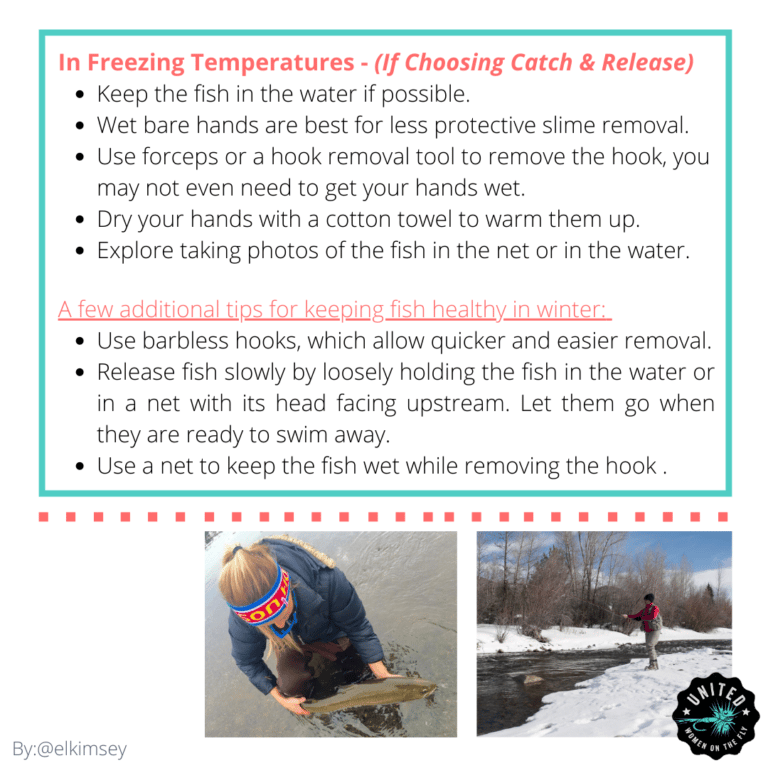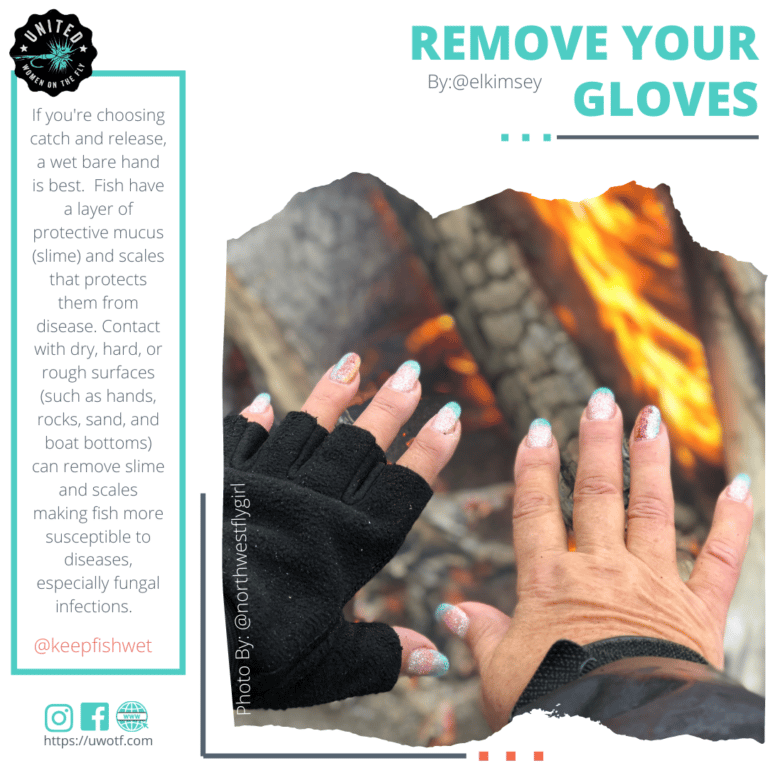Winter Fishing and Fish Handling Tips
Winter Fishing Week #2
Erin Kimsey continues our education of winter fishing with fish handling tips. Follow Erin at @elkimsey. Check out Keep Fish Wet for more fish handling tips and science based education.
Winter fly fishing can be pretty tough, but also very rewarding. As we look for continued opportunities to get outside amid the ongoing pandemic, you might try your hand at winter fly fishing. The challenges of cold weather safety, wading in freezing water, de-icing your guides and line, to keeping your toes and fingers warm – it is a whole different set of challenges than fly fishing during warmer temperatures. If you are willing to put in the extra effort, winter fly fishing offers solitude, beautiful scenery, and hopefully a rewarding day.
There are a few rarely discussed concerns with catch and release fishing to consider when the temperatures drop below freezing. While we know that fish are cold-blooded, and keeping them out of water can be detrimental at any temperature, freezing temperatures can cause additional impacts, such as causing potentially fatal damage to the gills and eyes.
It can be easy to get caught up in the rush of feeling the bite and getting the fish to the net, meanwhile forgetting you have gloves on your hands. Here are a few tips to keep in mind if you are hitting the water in cold temperatures and choose catch and release.
While it might sound undesirable to remove your gloves and wet your hands, your body is more resilient and adept to cold weather conditions than the fish.
Wet Bare Hand is Best
When gloves (or any type of cloth/fabric) come into contact with a fish, the material can remove the protective slippery layer that guards the fish from harmful fungi, bacteria, and parasites. While it might sound undesirable to remove your gloves and wet your hands, your body is more resilient and adept to cold weather conditions than the fish. So if you must handle the fish, please take your gloves off first and thoroughly wet your hands prior to making contact.
Hook Removal Tool
Perhaps consider adding a hook removal tool to your fishing gear. Using a hook removal tool provides for a quicker and gentler release, prevents you from having to touch the fish, eliminates the need for you to put your hands in the water, or at least minimizes the need to get your hands wet and cold.
Dry Hands with a Towel
Once you have released the fish, you can use a microfiber or cotton towel to dry off your hands and warm up your digits. After your hands are dry putting your gloves back on is key. Keep one hand in your pocket if you need to. If you have access to hand warmers, this can be an additional tool to keep your hands warm.
Explore Creative fish Photography
Explore taking photos of fish in the net and in the water. This will allow you to keep your hands dry and warm and still capture your amazing catch.

In Freezing Temperatures and Choosing Catch and RElease
- Keep the fish in the water if possible.
- Wet bare hands are best for less protective slime removal.
- Use forceps or a hook removal tool to remove the hook, you may not even need to get your hands wet.
- Dry your hands with a cotton towel to warm them up.
- Explore taking photos of the fish in the net or in the water.
Few Additional Tips
- Use barbless hooks, which allow quicker and easier removal.
- Release fish slowly by loosely holding the fish in the water or in a net with its head facing upstream. Let them go when they are ready to swim away.
- Use a net to keep the fish wet while removing the hook.
Blog Sources
Connect with Erin Kimsey
Tuesday tip Contributors Needed
We would love your Tuesday Tips. Please fill out the following form and we’ll send you information for writing a Tuesday Tip.




